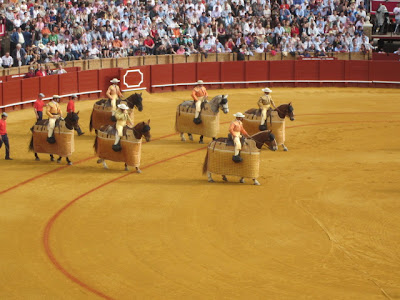Although I wrote about my liberal arts classes months ago, I just realized that I've never written about my business classes here. Considering I'm in a business program, I figured that I should fix that before the end of the semester. To be honest, they are not nearly as exciting as my liberal arts classes and I don't enjoy them as much. The level of Spanish expected of the business students is lower than that expected of the liberal arts students, many of whom are Spanish majors. They're not nearly as challenging and I haven't learned as much Spanish, though the business vocabulary that I have learned will probably be more useful to me in my future career.
The business classes are held at the University of Sevilla College of Business building. This building used to be a women's prison- it is not nearly as pretty as the palacio where my other classes are.
I am enrolled in European Economy as well as International Negotiation and Conflict Resolution. European Economy is my favorite class of the two. It has focused almost exclusively on the European Union, its structure, and its economic policies. Although I would have preferred more of a current events approach, it is interesting information to know.
My Negotiation class, on the other hand, has been uninteresting and rather useless to be honest. Again, I hoped that it would take a current events approach where we would discuss and analyze the current conflicts and negotiation that are ongoing today. For example, the Israel-Palestine conflict or Turkey petitioning to enter the EU. Unfortunately, that is not the direction that it has taken. Instead, we are learning techniques and strategies that we act out in fake negotiation scenarios that I truly believe are meant for middle school kids. It has not turned out to be the class that it could have been, in my opinion.
Overall, I do enjoy my liberal arts classes better- I have learned more about Spain and Spanish, which was the reason I came here to study in the first place. Although its crazy how fast this semester has flown- I have finals this week and my program ends on May 13. I can't believe I'm almost done with study abroad and junior year!































































